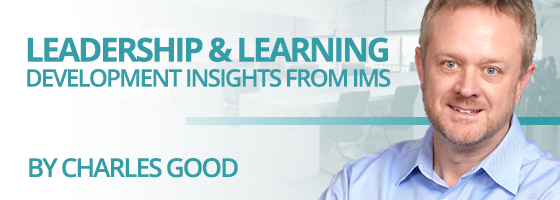In many situations, leaders hear ‘yes’ too often and don’t hear bad news until it is too late, making the wrong decision. In a recent Institute for Management Studies virtual program, Dr. Michael Roberto, best-selling author of Why Great Leaders Don’t Take Yes for an Answer and Unlocking Creativity, provided practical tools and techniques for stimulating dissent and debate to help leaders make better decisions. Throughout his IMS program, several of these best practices were explored in a historical context. Dr. Roberto then went on to demonstrate how these techniques were either successfully implemented or failed to be implemented by leaders in various historically significant events such as the Cuban Missile Crisis and the Space shuttle Challenger disaster. The following represent two best practices that Dr. Roberto discussed during his IMS program that will help you make better decisions .
IDENTIFY AND QUESTION ASSUMPTIONS AND BIASES
Everyone uses certain heuristics in all sorts of situations throughout their daily life. Heuristics are those mental shortcuts that facilitate problem solving and judgments. These general rules of thumb reduce our cognitive load and can make immediate judgments but can also lead to cognitive biases. Daniel Kahneman, best-selling author of Thinking, Fast and Slow, agrees and states, “heuristic shortcuts will produce biases, and that is true for both humans and artificial intelligence, but the heuristics of AI are not necessarily the human ones.” The following represents a list of some of the most common biases that occur in decision-making.
- Confirmation bias is seeking data to confirm what you already believe or avoid data that does not support your beliefs.
- Overconfidence bias is when you give yourself too much credit for the wins while minimizing the other external factors that contributed to the outcome. The opposite is true when you fail; you place too much weight on the external factors and not enough weight on your part in the result.
- Survivorship bias is to ignore common failures and hold onto success stories as proof of what is possible. You fail to consider that things like luck, timing, connections, and socio-economic background have all played a role in the process.
- Sunk cost bias is our tendency to continue investing in a losing proposition because of what it’s already cost us. This occurs despite the fact that investing more into something that’s already not working, does not make it better.
SEEK DIVERSITY OF THOUGHT THROUGH PSYCHOLOGICAL SAFETY
To make better decisions, you also need diversity of thought. However, for people to feel comfortable sharing dissenting thoughts, there needs to be a shared belief that your team or organization is considered a safe place for interpersonal risk-taking (a.k.a. strong psychological sense of safety). The following advice will help to ensure this type of environment is created.
- Be mindful to ask for alternative viewpoints and question conventional wisdom.
- Share stories of failures, including your own, and encourage experimentation.
- Be sure to celebrate candor by thanking those who share bad news.
- Do not forget to explain how dissenting views have reshaped your thinking.
Daniel Kahneman offers a simple rule. “Before an issue is discussed, all members of the committee should be asked to write a very brief summary of their position. This procedure makes good use of the value of the diversity of knowledge and opinion in the group. The standard practice of open discussion gives too much weight to the opinions of those who speak early and assertively, causing others to line up behind them.”
Remember, failures in decision-making can occur at the individual, group, and organization levels. Therefore, be aware of individual biases that can affect your decision-making as well as team dynamics and system rigidity that can affect decisions at a team and organizational level.
Each year leaders make billions of decisions, and almost all of them can be made better. But it is important to note that understanding these techniques is not enough; they must be practiced and incorporated into your everyday decision-making processes.
ABOUT CHARLES GOOD
Charles Good is the president of The Institute for Management Studies, which provides transformational learning experiences that drive behavioral change and develop exceptional leaders. Charles is an innovative and resourceful leader who specializes in bringing people together to develop creative organizational and talent strategies that enable business results. His areas of expertise include assessing organizational skill gaps and leading the design, creation and delivery of high impact, innovative learning solutions that achieve business goals.

3 Comments